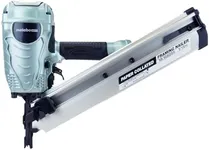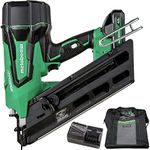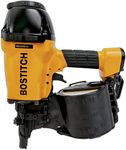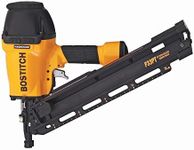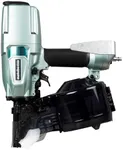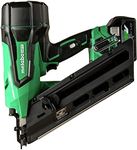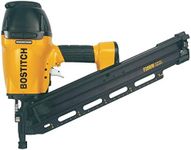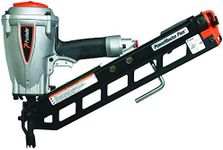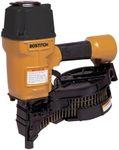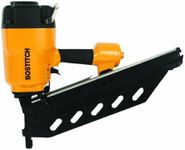Buying Guide for the Best Framing Nailers
Choosing the right framing nailer can make your construction or woodworking projects much easier and more efficient. Framing nailers are powerful tools designed to drive large nails quickly into wood, making them essential for framing walls, building decks, or constructing fences. To find the best fit for your needs, it's important to understand the key features and specifications that set different models apart. By considering how and where you'll use the nailer, you can select a tool that matches your project requirements and personal preferences.Power SourceThe power source of a framing nailer determines how the tool operates. The main types are pneumatic (air-powered), cordless (battery-powered), and sometimes fuel-powered. Pneumatic nailers require an air compressor and are known for consistent power and lighter weight, making them great for long jobs in one location. Cordless nailers offer more mobility since they don't need a hose or compressor, which is ideal for working in tight spaces or moving around a lot. Fuel-powered nailers use a gas cartridge and battery, providing portability and strong driving force, but require regular cartridge replacements. To choose the right one, think about where you'll be working most often—if you have easy access to power and don't mind a compressor, pneumatic is reliable; if you need to move freely or work in remote areas, cordless or fuel-powered might be better.
Nail Size and TypeFraming nailers are designed to handle specific ranges of nail lengths and types, such as clipped head or round head nails. The nail size affects the strength and suitability for different projects—longer nails are used for heavy-duty framing, while shorter ones are for lighter tasks. Some nailers are compatible with a wide range of nail sizes, while others are more limited. Consider the types of projects you'll tackle most often; if you need versatility, look for a nailer that accepts a broad range of nail lengths and types. Always check local building codes, as some areas require round head nails for structural work.
Magazine Capacity and Loading StyleThe magazine capacity tells you how many nails the tool can hold before needing a reload, and the loading style (stick or coil) affects how the nails are fed into the tool. Higher capacity means fewer interruptions, which is helpful for large projects. Stick magazines are more common and easier to handle, while coil magazines can hold more nails and are often used for high-volume work. If you plan to do a lot of continuous nailing, a higher capacity or coil magazine might be more convenient. For occasional or smaller jobs, a standard stick magazine is usually sufficient.
Weight and ErgonomicsThe weight and design of a framing nailer impact how comfortable it is to use, especially over long periods. Lighter nailers reduce fatigue, but sometimes heavier models offer more stability and less recoil. Ergonomic features like comfortable grips, balanced weight distribution, and easy-to-reach controls can make a big difference in usability. If you expect to use the nailer for extended periods or in awkward positions, prioritize a lighter, well-balanced model with good ergonomics.
Depth AdjustmentDepth adjustment allows you to control how deep the nail is driven into the wood. This is important for different materials and project requirements—sometimes you want the nail flush with the surface, other times slightly countersunk. Some nailers offer tool-free depth adjustment, making it quick and easy to change settings on the fly. If you work with a variety of materials or need precise control, look for a nailer with easy and accurate depth adjustment.
Jam Clearing MechanismNail jams can happen, and a good jam clearing mechanism makes it easy to remove stuck nails and get back to work. Some nailers have tool-free jam release features, while others may require tools to clear jams. If you want to minimize downtime and frustration, choose a model with a simple, tool-free jam clearing system.
